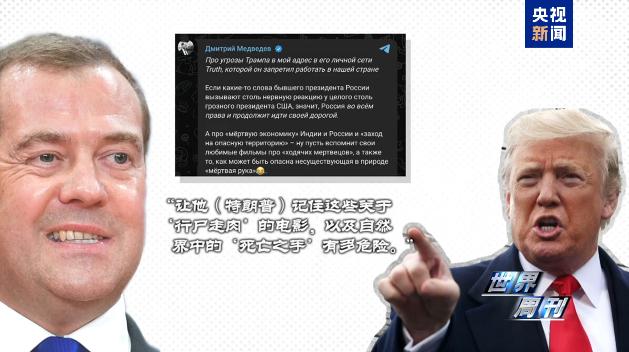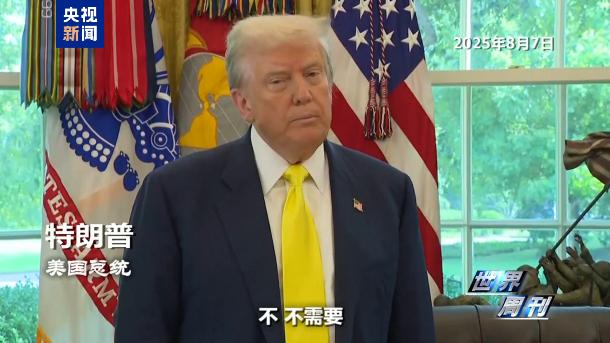Last week, just one day before the so-called «deadline» set by the U.S. for a peace agreement between Russia and Ukraine, news emerged of an upcoming summit between the Russian and American leaders. Analysts noted that while the meeting has drawn significant attention, it cannot mask the ongoing intense rivalry between the two nations. Recent exchanges of rhetoric have escalated, with discussions on nuclear deployments and treaties raising serious concerns. Reports suggest that only one nuclear arms treaty remains between the U.S. and Russia, and a new arms race is a possibility.
U.S. President Trump and Russian President Putin are scheduled to meet on August 15 in Alaska to discuss the Ukraine crisis. This will be their first face-to-face meeting since their encounter at the 2019 G20 summit.
When asked about his earlier proposal for a trilateral meeting involving the U.S., Russia, and Ukraine, Trump gave an ambiguous response. A reporter inquired, «Does Putin need to meet with Zelensky before you meet with Putin?» Trump simply replied, «No.»
«Ultimatum» Still in Effect
Escalating War of Words Between U.S. and Russia
However, Trump also stated that the U.S. deadline for Russia remains valid.
On July 28, during a visit to Scotland, Trump expressed disappointment in Putin and considered shortening the previously set 50-day deadline for a Russia-Ukraine peace agreement.
In response, Russia’s former president and current deputy chairman of the Security Council fired back on social media, stating, «Russia is not Israel or Iran. Every ultimatum is a threat and a step toward war.»
On July 31, the U.S. ambassador to the UN declared at a Security Council meeting, «President Trump has made it clear that Russia and Ukraine must reach a ceasefire by August 8.»
The same day, Trump referred to the Russian official as a «failed former president» and warned him to «watch his words.»
The Russian official later responded on Telegram, referencing apocalyptic films and the dangers of a «dead hand» in nature.

Speculation arose that the remarks alluded to a post-apocalyptic TV series, hinting at the potential for a U.S.-Russia nuclear conflict leading to global destruction.
«The Most Explicit Nuclear Threat»
Meanwhile, the war of words continued to escalate.
On August 1, Trump announced on social media that he had ordered the deployment of two U.S. nuclear submarines to «appropriate locations,» likely near Russian waters.
Trump stated, «When you mention the word ‘nuclear,’ my eyes light up. We better be careful because this is the ultimate threat.»
On August 4, a Russian presidential spokesperson warned that no one wins a nuclear war and urged caution in nuclear-related statements.
Analysts described the current U.S.-Russia nuclear standoff as the «most explicit nuclear threat» since the Cuban Missile Crisis.
Military experts speculated that the U.S. likely deployed Ohio-class submarines, the backbone of its sea-based nuclear deterrent.
«U.S. and Russia’s Nuclear Forces at Parity: A Full-Spectrum Standoff»
Data indicates the U.S. Navy operates 71 nuclear submarines, the world’s largest underwater fleet, including 14 Ohio-class ballistic missile submarines, each capable of carrying 24 Trident II missiles with a range exceeding 12,000 km. Russia maintains a formidable nuclear deterrent, with around 30 nuclear submarines, including 10 strategic submarines equipped with Bulava intercontinental ballistic missiles.
On July 24, Putin attended the delivery ceremony of a new Borei-A-class submarine. Days later, he emphasized the growing strength of Russia’s sea-based nuclear forces.
Under Russia’s naval development strategy, four more Borei-A-class submarines will be added, alongside modernized Yasen-M-class attack submarines.
A retired British naval officer noted that the U.S. and Russia are evenly matched in submarine capabilities. The nuclear standoff extends beyond the seas to land and air.
«U.S. Accelerates Nuclear Deployments; Russia Withdraws from INF Treaty Constraints»
On August 4, Russia announced it would no longer abide by self-imposed restrictions under the Intermediate-Range


